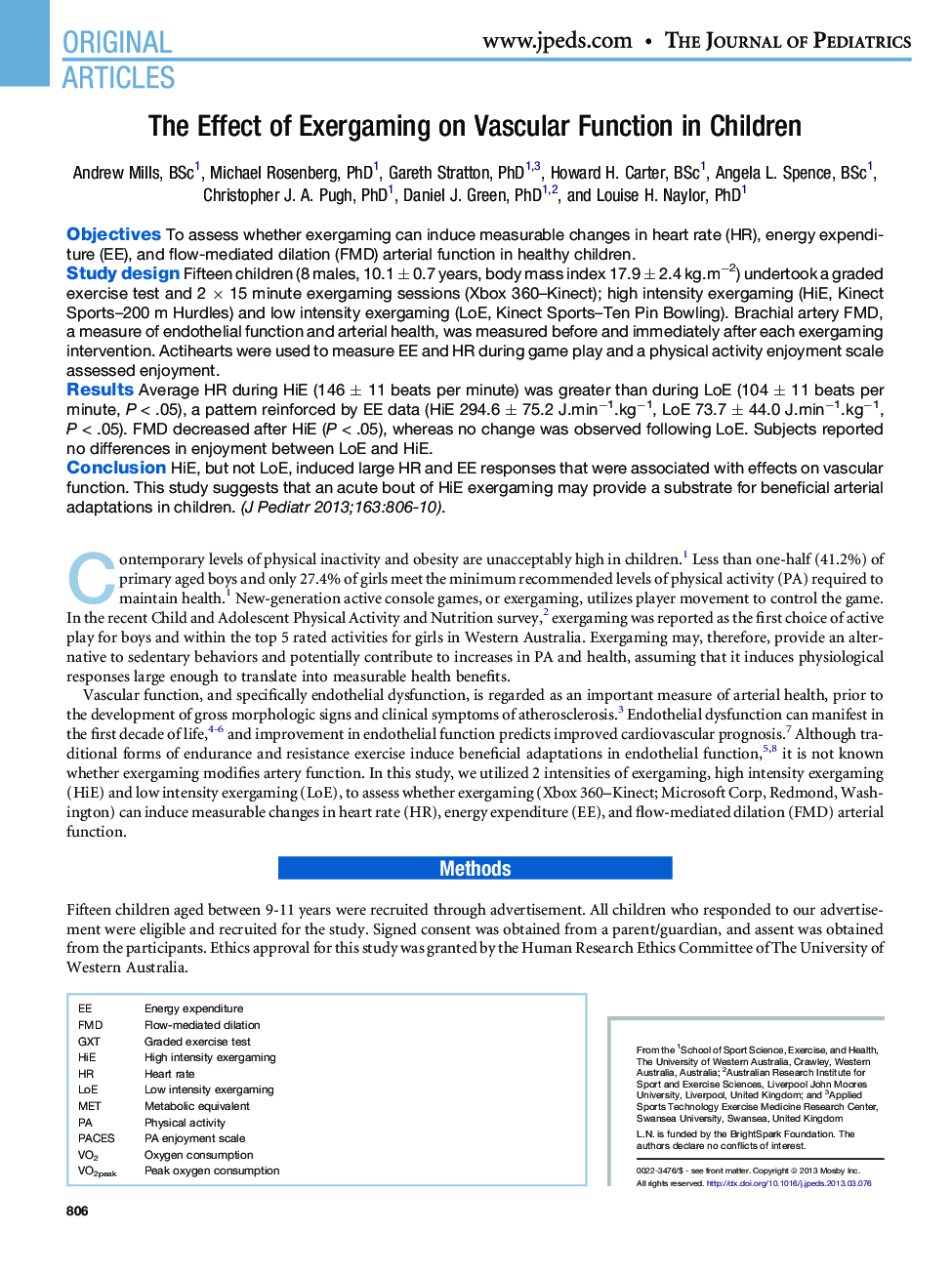| Article ID | Journal | Published Year | Pages | File Type |
|---|---|---|---|---|
| 6222751 | The Journal of Pediatrics | 2013 | 5 Pages |
ObjectivesTo assess whether exergaming can induce measurable changes in heart rate (HR), energy expenditure (EE), and flow-mediated dilation (FMD) arterial function in healthy children.Study designFifteen children (8 males, 10.1 ± 0.7 years, body mass index 17.9 ± 2.4 kg.mâ2) undertook a graded exercise test and 2 Ã 15 minute exergaming sessions (Xbox 360âKinect); high intensity exergaming (HiE, Kinect Sports-200 m Hurdles) and low intensity exergaming (LoE, Kinect Sports-Ten Pin Bowling). Brachial artery FMD, a measure of endothelial function and arterial health, was measured before and immediately after each exergaming intervention. Actihearts were used to measure EE and HR during game play and a physical activity enjoyment scale assessed enjoyment.ResultsAverage HR during HiE (146 ± 11 beats per minute) was greater than during LoE (104 ± 11 beats per minute, P < .05), a pattern reinforced by EE data (HiE 294.6 ± 75.2 J.minâ1.kgâ1, LoE 73.7 ± 44.0 J.minâ1.kgâ1, P < .05). FMD decreased after HiE (P < .05), whereas no change was observed following LoE. Subjects reported no differences in enjoyment between LoE and HiE.ConclusionHiE, but not LoE, induced large HR and EE responses that were associated with effects on vascular function. This study suggests that an acute bout of HiE exergaming may provide a substrate for beneficial arterial adaptations in children.
